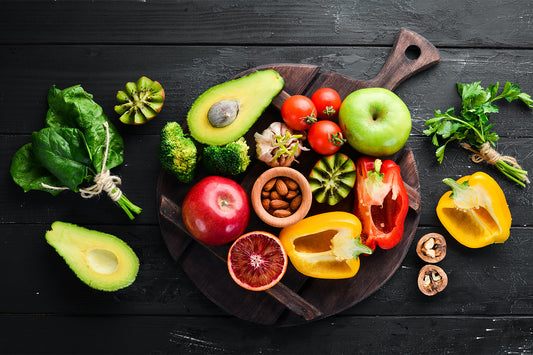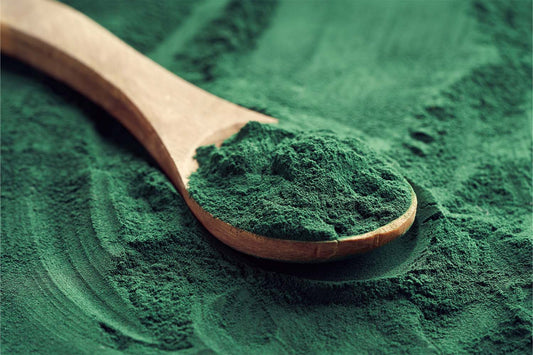How do you get your protein? Vegans are probably more than used to getting this question. Fortunately, if you are on a vegan diet, you have plenty of great options for getting the right amount of protein.
iwi life is here to provide a whole list of answers to help you find the best ways to get your protein. Including a range of protein-rich, plant-based foods make it easy to get all the protein you need.
Why Is Protein Important?
Protein is one of the essential building blocks of life, as it is found in every human cell and plays a vital role in cell growth and tissue repair. Consuming enough protein helps you build muscle, cartilage, and skin and maintain a healthy body weight.
Protein is made up of chains of amino acids used throughout the body. Proteins can be made up of 20 different amino acids, but there are nine amino acids that your body cannot make on its own. In order for your body to build and use protein efficiently, you need to maintain a varied diet that includes all of the necessary amino acids.
Without enough protein, you may start to feel weak and tired. A lack of protein can lead to a loss of muscle mass, a slower metabolism, extra hunger, and physical signs such as thin, brittle hair and fingernails. Fortunately, if you are mindful about your protein intake, it is easy to get the amount you need each day from plant foods.
How Can You Get Protein on a Vegan Diet?
A vegan diet comes with several potential health benefits, including lower cholesterol levels, lower risks of heart disease, and lower blood pressure. But does it include enough protein? Contrary to popular belief, there are plenty of ways for vegans to get their protein.
Many plant-based foods contain less protein than animal products, so you should be mindful of the foods you are eating in order to get all the protein your body needs. Incorporating the following foods into your diet is a great way to obtain powerful plant protein.
1. Soybeans

Soybeans are an amazing source of protein, and they can be enjoyed in several forms. Tofu, edamame, and soy milk are just some examples of how you can include protein-rich soybeans in your diet.
Each soy product has different amounts of protein, and you should check the nutrition label of different soy products to determine how much protein you are getting from your food.
2. Lentils
These legumes are an excellent source of protein. Lentils contain 9 grams of protein per 100 grams, or about a half of a cup. You can choose from red lentils, yellow lentils, and green lentils for different flavors and textures, depending on how you choose to include them in your diet.
Lentils can be made with rice, in soups, and in curries, giving you plenty of ways to incorporate them into your meal planning. Other legumes, like black beans, split peas, and garbanzo beans can give you added protein in soups, chilis, hummus, and other dishes.
Lentils and other legume family members are great sources of complex carbohydrates, iron, and fiber. Lentils are also a great option if you are looking to reduce your fat and calorie intake.
3. Quinoa

A cup of cooked quinoa provides a full 8.1 grams of protein. The same amount of quinoa is also high in potassium and provides 16% of your daily recommended iron intake. Quinoa is a great addition to a vegan diet particularly because it is a complete protein, which means that it contains all of the essential amino acids that the body cannot make on its own.
You can use quinoa as a substitute for white rice in several entrees or enjoy it as a salad mixed with other vegetables.
4. Nuts and Seeds
Including nuts and seeds in your diet allows you to easily boost your protein intake. Cashews, almonds, and peanuts are all great examples. Nut butters like peanut butter and almond butter are a great way to include more protein in your diet. Nuts are also rich in healthy fats and iron, offering many other health benefits. Be sure not to overdo it, though, as nuts are high in calories.
Seeds are another great addition to your diet, providing not only protein but also fiber. Chia seeds, hemp seeds, pumpkin seeds, sunflower seeds, and flax seeds are all excellent options. Hemp seeds and chia seeds are both complete proteins, providing added benefits.
Easily improve your daily protein intake by putting peanut butter on your toast or adding chia seeds to a smoothie or yogurt.
5. Seitan

Seitan is a great way to get protein if you are on a plant-based diet. In fact, seitan is one of the most protein-rich plant-based foods. Seitan is made from vital wheat gluten, which is a protein derived from wheat berries. Seitan can be prepared in many ways depending on where you get it, but one serving of seitan is usually about 20 grams of protein.
Seitan is a great substitute for meat with its texture, and it can be seasoned or marinated to fit a range of dishes. You can include seitan in tacos, salads, stir-fried dishes, and more. Those with gluten intolerance will need to look toward another one of the protein sources on this list.
6. Green Vegetables
The foundation of a vegan diet, vegetables can also make a great source of protein. Green vegetables tend to have the most protein. Include green beans, asparagus, kale, or spinach as part of your meals to receive more high-protein vegetables. About 100 grams of cooked spinach has about 3.3 grams of protein.
You can eat more green vegetables by using leafy greens in a salad, including them in a stir fry, or adding them as a steamed side to your dinner entree.
7. Protein Powders
Although it is best to obtain as much of your protein as you can directly through food, supplements can be a helpful way to ensure you get additional protein, especially if you exercise regularly and need more protein than the average person. Most protein powders are made from whey or milk products, but plant-based protein powders have become increasingly common.
Vegan protein powders are often made from either pea protein or rice protein, which are both very protein dense.
How Can Vegans Improve Protein Intake?
As with most nutrients, your body does not necessarily absorb and use all the protein you consume. Although eating good sources of protein is most of the battle, there are some tips to keep in mind to maximize your protein intake on a vegan diet. A great start is to include complete proteins in your diet.
Eating complete proteins ensures that you get all the amino acids needed to form necessary proteins. Not every food is a complete protein, but you can form complete proteins by pairing certain foods together. Some of the following combinations will provide your body with proteins by combining essential amino acids.
- Whole grains + nut butters
- Legumes + whole grains
- Legumes + nuts or seeds
Other ways to improve your protein intake include pairing it with important nutrients, like probiotics or omega-3 fatty acids. Since there are few vegan sources of omega-3 fatty acids, taking an omega-3 supplement is a great way to obtain these essential nutrients.
Get All the Nutrients You Need
Protein is one of the many important nutrients you should strive to include in a vegan diet, and trying these seven sources is a great way to start. On a vegan diet, it is important to ensure you get all the nutrients you need to maintain a healthy lifestyle, including other necessary nutrients like vitamin B12 and omega-3 fatty acids.
iwi life is here to help, ensuring you get essential fatty acids. iwi life omega-3 supplements are completely plant-based, using the power of algae to provide both DHA and EPA omega-3s. Explore our complete family of products to see how algae and omega-3s can support your overall health and wellness.
Sources:
Protein in diet | MedlinePlus Medical Encyclopedia
Health Benefits of a Vegan Diet | Rush System
The Complete Protein Foods List And Facts | Piedmont Healthcare
Calories in 100 G Seitan | Nutritionix
Spinach, raw nutrition facts and analysis. | Nutrition Value
















